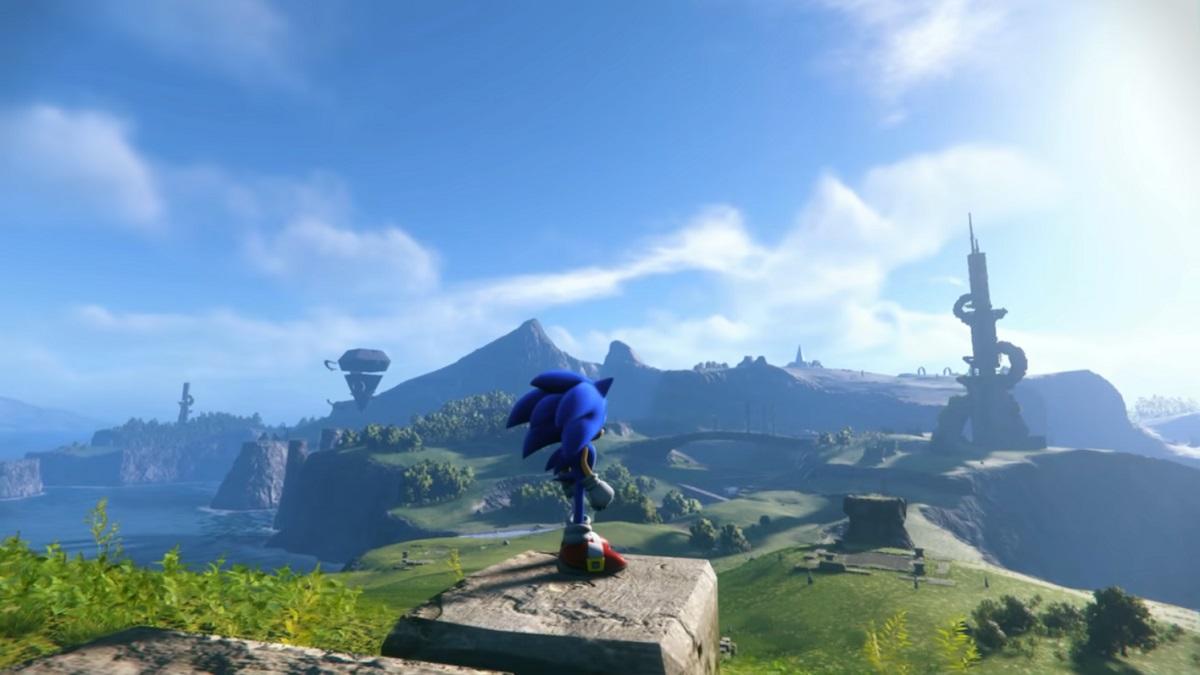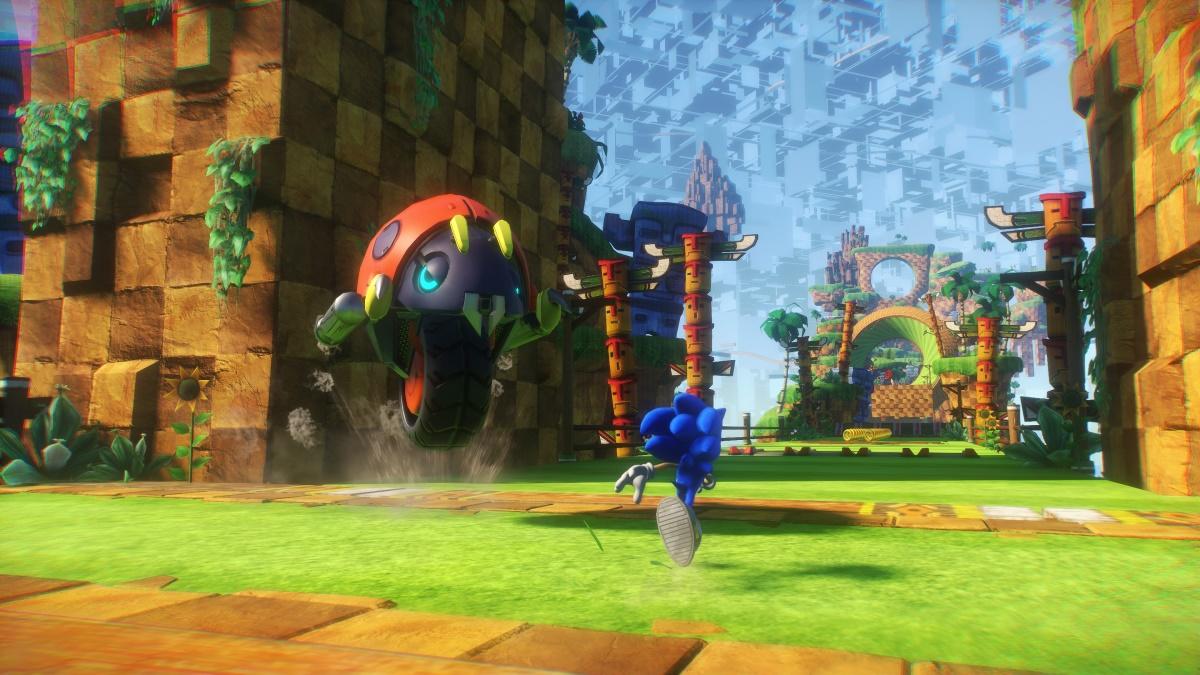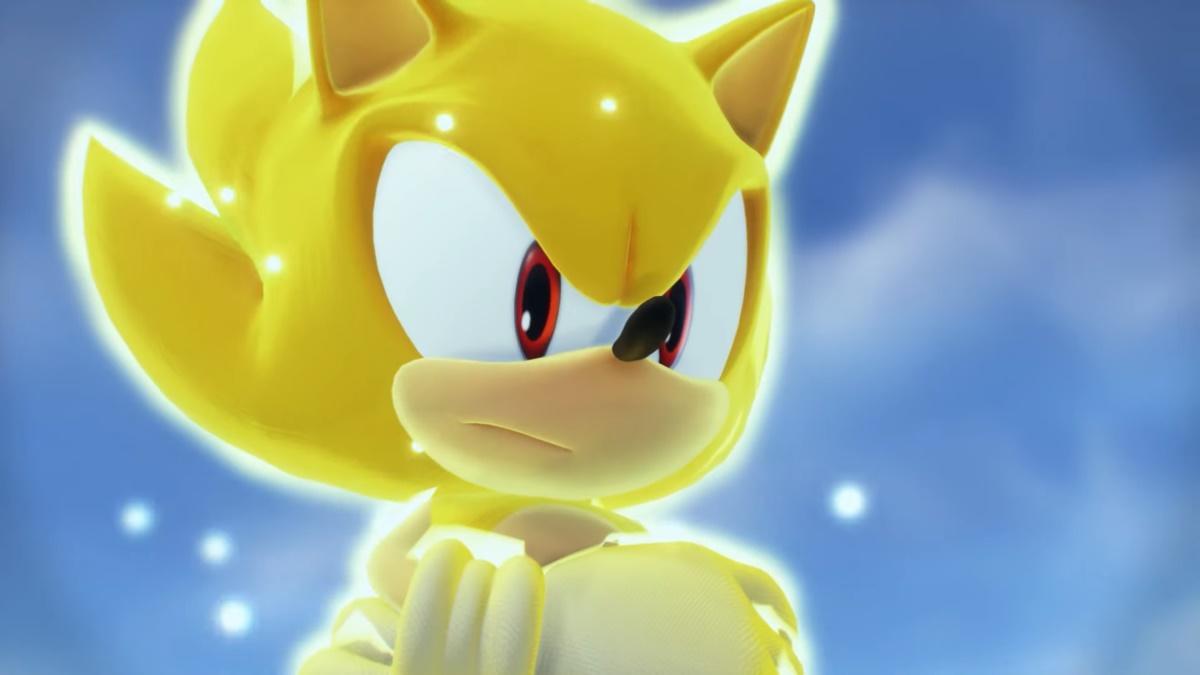Sonic Frontiers Review: A New Hedgehog Hope
Sonic the Hedgehog has been enjoying a huge renaissance over the last few years thanks to Paramount's highly successful movies, but it's been a while since fans of the video games have had something to celebrate. Developer Sonic Team is well aware of that fact and has been hard at work trying to turn things around. The developer's latest is Sonic Frontiers, which is the most ambitious game the character has starred in since 1998's Sonic Adventure. While the game isn't perfect, Sonic Team was largely successful in those ambitions.
When Sonic Frontiers begins, the hedgehog hero finds himself on the mysterious Starfall Islands. He, Tails, and Amy have traced energy readings related to the Chaos Emeralds, but Sonic's compatriots quickly go missing. The blue blur begins exploring his new surroundings, only to find that his friends have been trapped in Cyber Space, and need his help. However, his surroundings are inhabited by massive Titans, and he'll need the help of the Chaos Emeralds to defeat them.
One of the biggest changes for Sonic Frontiers is that players will spend the majority of their time exploring "Open Zones." Each of the Starfall Islands acts as a big, open world to explore, and there are a number of items Sonic must seek out in order to progress. Memory Tokens will help Sonic's friends regain their memories and move the story along, Portal Gears will allow Sonic entry into Cyber Space levels, and Vault Keys will unlock protective barriers housing the Chaos Emeralds. Sonic can also solve puzzles to map out sections of the island, and gain items used to increase his strength and defense. While the game doesn't properly express it, this last part is pretty important, as players will need to buff their strength and ring capacity as much as possible before that first Titan battle.

Since the days of Sega Genesis, Sonic games have always been about going fast, but also learning when to go slow. That's been a constant of the series, and that does remain prevalent in Sonic Frontiers. However, one thing I really appreciate about the game is just how much it let me cut loose as Sonic; the Open Zones give the character more freedom to zip around than ever before. This might be the fastest the character has ever felt, and there's something really gratifying about that. Unfortunately, as fast as Sonic goes, there's little in the way of fast-travel options, and sometimes it can get a little frustrating trying to remember exactly how to get back to certain locations.
While most of the gameplay in Sonic Frontiers takes place in the Open Zones, the aforementioned Cyber Space stages provide a more traditional Sonic experience. These areas feature a mix of 2D and 3D, and include familiar environments and enemies from past games. Beating these stages unlocks a Vault Key, and players will need a bunch to obtain the Chaos Emeralds on each island. Players get extra Vault Keys for accomplishing extra tasks, such as beating the stage in a set amount of time, finding all the Red Star rings, and completing it with a set number of standard rings. Most of the stages won't take players long to beat, but completing all of these tasks will challenge even the heartiest of Sonic fans. There's some really great level design in these stages, too, which adds an extra incentive to keep trying to complete each task.
I reviewed Sonic Frontiers on Nintendo Switch, and I was very curious to see how the handheld would handle the game. Prior to launch, producer Takashi Iizuka stated that Sega's Hedgehog Engine would allow the game to look and run the same on Switch with minimal compromises. I'm happy to say that I found that the game runs really well on Switch, even if the textures look a little on the fuzzy side. There is one performance issue I came across, and that's the game's pop-in. As Sonic zips through the Open Zones, players will see parts of the world come into focus suddenly. Sometimes it's just textures in the sand on Ares Island, and other times it's entire structures in the sky. The pop-in rarely had a negative impact on the gameplay (I never missed a critical jump or foe), but it's definitely noticeable. While I only had the opportunity to play the Switch version, from what I've seen online, this seems to be an issue with all versions of the game.

One of the biggest problems Sonic Frontiers has is that its gameplay loop can get a little frustrating. Sonic explores each island, helps a friend recover their memories, finds all seven Chaos Emeralds, fights a giant foe, and then does it all over again on the next island. Having to do this all over again for each island is likely going to prove tedious for some players. The sheer number of items to collect can get a little confusing, too. In a way, this aspect of Sonic Frontiers felt reminiscent of '90s platformers like Banjo-Kazooie or Donkey Kong 64, which tasked players with collecting a ton of different items to progress. Early on, I struggled trying to remember exactly which item was required for fishing with Big the Cat, or which ones were needed to increase Sonic's defense.
In previous Sonic games, it often felt like the character's continuity was a bit of an afterthought, but in Sonic Frontiers, writer Ian Flynn has really made that history feel like an important part of the narrative. As Sonic works to rescue his friends, Frontiers treats players to neat flashback sequences to games like Sonic the Hedgehog 3 and Sonic Adventure, and the dialogue also references past locations and characters. It also impressed me how things like a recent Tails Tube episode showed Sonic and Tails leaving for the Starfall Islands, while the game's animated prologue with Knuckles set up the character's separate arrival. Fans that aren't familiar with these things won't find themselves lost, but the game uses these elements to complement the story and character interactions, and it's all the better for it.
The characterizations are helped by strong voice acting throughout. Sonic Frontiers features a number of veterans from the franchise, including Roger Craig Smith, Mike Pollock, and Colleen O'Shaughnessey. The audio in general is fantastic, though. There's a great variety of music, and it's well-suited for each situation. One moment you'll be listening to the peaceful piano theme of Kronos Island, the next you'll be listening to an emo-influenced track from Kellin Quinn while battling it out with a massive Titan as Super Sonic. The fact that this game's music didn't get a nomination at The Game Awards is criminal.

Sonic Frontiers has a lot of little flaws, but its strengths are great enough that it's hard to harp on them too much. The game's Open Zones are fun to explore, the Cyber Space levels are well-crafted, and the audio is excellent. Sonic Team has clearly put a lot of thought and care into crafting this new direction for the series, and the results are impressive. I truly hope Sega takes the elements that work in Sonic Frontiers and fine-tunes them for the next entry in the series. The somewhat repetitive gameplay loop is Frontiers' biggest issue, but most Sonic fans will probably be able to overlook it thanks to everything the game does right. Sonic the Hedgehog was in desperate need of a game like this, and it feels great to say that Sonic Team (mostly) pulled it off. The franchise's future is looking brighter than it has in a long time.
Rating: 4 out of 5
Sonic Frontiers is available now on Nintendo Switch, PlayStation 4, PlayStation 5, Xbox One, Xbox Series X|S, and PC. The game was provided by the publisher for the purpose of this review, and it was reviewed on a Nintendo Switch OLED.




